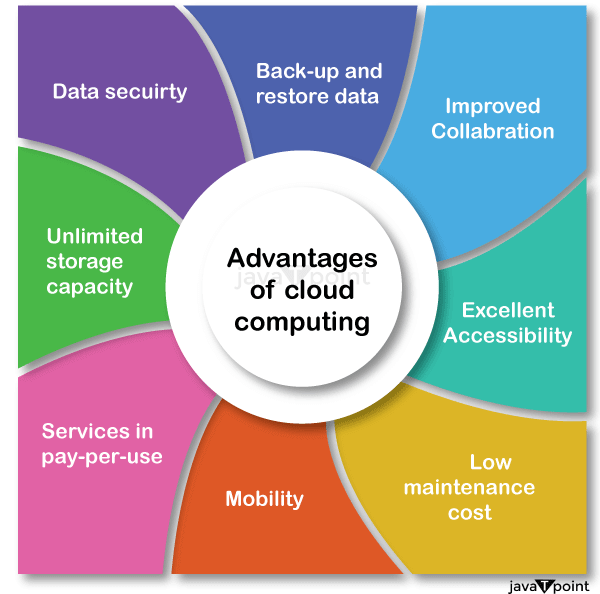Achieve Seamless Scalability With Cloud Provider
In the ever-evolving landscape of cloud solutions, achieving smooth scalability stands as a cornerstone for modern-day businesses seeking to stay adaptable and affordable. The quest for seamless scalability with cloud services unveils a world of possibilities for those prepared to accept the transformative power of dynamic resource administration.
Advantages of Cloud Scalability
Cloud scalability supplies organizations the flexibility to dynamically readjust sources based on need, ensuring optimum efficiency and expense efficiency. Furthermore, cloud scalability promotes development and trial and error by permitting businesses to easily check new ideas and range them as required. Ultimately, the benefits of cloud scalability prolong past expense savings to include enhanced efficiency, dexterity, and innovation.
Secret Features for Scaling
Effective scaling in cloud services relies on vital features that make it possible for organizations to readjust resources dynamically based upon need. One essential feature for scaling is elasticity, allowing sources to scale up or down in response to changing workloads. This guarantees that companies can satisfy performance demands without over-provisioning sources. An additional essential function is scalability, enabling systems to manage increased workload by adding sources perfectly. This function is critical for accommodating growth without jeopardizing efficiency. In addition, automation plays an essential function in scaling by automating the provisioning and de-provisioning of resources based on predefined policies. Automation lowers human intervention, boosts effectiveness, and ensures rapid action to transforming demands. Tracking and analytics tools are also crucial for scaling, providing understandings right into source use, performance metrics, and possible bottlenecks. These tools allow companies to optimize and make informed decisions source allocation for efficient scaling. Generally, these crucial attributes jointly empower companies to attain smooth scalability in cloud solutions.
Executing Auto-Scaling Approaches
To effectively maximize resource allowance and adapt to varying workloads, companies need to tactically implement auto-scaling strategies in their cloud services framework. Auto-scaling allows systems to automatically adjust the number of calculate resources based on real-time need. There are various auto-scaling methods that organizations can employ, such as predictive scaling, which uses historic data to forecast future source demands, and reactive scaling, which reacts to current workload adjustments.

Ideal Practices for Scalability
For organizations intending to improve their scalability in cloud services, executing ideal practices is vital for ideal efficiency and source management. One trick ideal technique is developing applications with a microservices style. This method breaks down applications right into smaller, independent solutions that can be released, updated, and scaled separately, permitting useful site better versatility and scalability.
One more crucial method is utilizing containerization innovation, such as Docker or Kubernetes. Containers make it possible for the product packaging of applications and their dependencies into isolated units, making it much easier to scale elements individually and deploy them consistently across various settings.
In addition, applying automated deployment and infrastructure as code (IaC) can enhance scalability efforts (linkdaddy cloud services). Automation devices like Terraform or Ansible assistance in provisioning and handling resources successfully, lowering hands-on errors and making it possible for fast scalability
Additionally, keeping track of efficiency metrics, establishing notifies, and conducting routine capacity preparation are necessary techniques to make certain positive scalability management. By adhering to these ideal practices, companies can accomplish smooth scalability in their cloud services while enhancing performance and source usage.
Surveillance Performance Metrics
When examining the effectiveness of cloud services scalability, very closely keeping an eye on performance metrics is imperative for ensuring optimal capability and resource allowance. By continually tracking vital efficiency indicators (KPIs) such as response times, source, latency, and throughput application, companies can get important understandings into the wellness and effectiveness of their cloud infrastructure. Keeping an eye on efficiency metrics enables the very early detection of prospective bottlenecks or problems that could impact scalability, enabling positive steps to be required to address them before they rise.

Verdict
In final thought, attaining smooth scalability with cloud services is important for companies to maximize efficiency, improve development, and maintain high efficiency levels throughout peak times. By leveraging check out here the benefits of cloud scalability, executing auto-scaling strategies, utilizing vital functions such as flexibility and automation, and complying with finest methods like application design and efficiency tracking, organizations can successfully scale their systems while making best use of resource use and performance.
The quest for smooth scalability with cloud solutions introduces a globe of opportunities for those prepared to accept the transformative power of dynamic source monitoring.
Cloud scalability provides organizations the flexibility to dynamically readjust resources based on demand, ensuring ideal performance and price efficiency. One more essential function is scalability, making it possible for systems to handle increased workload by including sources perfectly.For companies intending to enhance their scalability in cloud solutions, implementing best methods is important for optimal efficiency and resource administration.When analyzing the efficiency of cloud solutions scalability, carefully keeping track of performance metrics is crucial for ensuring ideal performance and resource allotment.